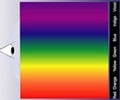Introvert and Extrovert
Personality can be classified distinctively on the basis of different and/or singular parameters like traits, physical structure, temperament, nature, etc. For example – Indian Ayurveda classifies people in three categories – Vatta, Pitta and Kafa.
According to Jung, there are two types of personalities based on dimensions of attitude:
Extrovert Personality : Individuals possessing this personality type are social, practical, appear affectionate, informal, are good conversationalists, are active and lively. They are habitually outgoing, venturing forth with confidence into the unknown. They prefer outdoor activities, tend to be essentially social - participating in various social and personal activities. They appear full of energy and tend to involve themselves in a variety of pursuits. They are generally good leaders of big and small groups; they apparently live in the present, concentrating on current activity. These individuals adapt easily to a given situation and are particularly influenced by objects and events in the external world.
Introvert Personality: Individuals who prefer to remain isolated or in the company of very few people, can be categorized as ones who have an introverted personality. Introvert people are more prone to thinking, and are thus involved in creating novel entities. They have keen interest in their own psyche. They are formal, idealistic, less social, talk less and brood about the future. They involve themselves minimally in social activities or in those activities which demand their active, direct interaction with many people. They remain passive and avoid being in the centrestage, or recognition of any kind. They are shy and inscrutable. They may appear to be dull and devoid of enthusiasm to others. They prefer indoor activities, to outdoor ones.
It is fairly difficult to find a person with a strictly singular characteristic. Many individuals may be either introverts or extroverts, but generally speaking, a mix of both types of characteristics are found in a person. The personality type, which possesses the personality traits of both introvert and extrovert types are known as
Ambivert Personality. These individuals show traits of introverted personality in some situations and in others, they behave as an extrovert personality type. This classification of ambivert personality was given by psychologist Eysneck in 1947.
What Are the Common Traits of Introverts?
While extroverts look for other people to meet their energy demands, introverts rely on their own thoughts and well-being to refuel. In the United States, introverts make up between one-third and half of the population. While introversion varies from person to person, there are certain common behavioral characteristics among them. Some of these include:
- To focus, they require a calm setting.
- Self-awareness and reflection.
- Spend some time deciding.
- Feel at ease in solitude.
- Prefer to write rather than speak.
- Don't want to collaborate with others.
- Having a small number of friends, but being close to them.
- Apply their creativity to resolve an issue.
- After being in a crowd, feel exhausted.
Four Types of Introverts You Should Know About
Different kinds of introverts exist. Some people fall somewhere in the middle of the introverted spectrum, while some are more introverted than others. We refer to them as ambiverts. There are four subtypes of introverts:
- This is the so-called "classic" introvert. They prefer peaceful settings and small groups of individuals to crowded areas..
- These folks have a tendency to daydream. They have more inventive imaginations and spend more time pondering.
- They like solitude because they are at ease and frequently feel uncomfortable or bashful in social situations.
- These introverts are a little astute and deliberate before acting. Instead of responding to a problem on the spur of the moment, they deliberate before acting.












